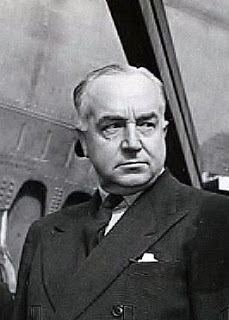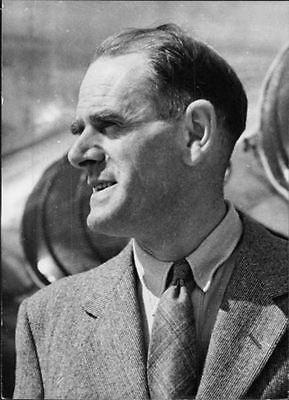Nationality British Name Ronald Bishop | Children 2 sons Spouse(s) Nora | |
 | ||
Significant awards Royal Aeronautical Society Significant advance | ||
Employer(s) de Havilland 1921 – 64 Engineering discipline Aeronautics | ||
Ronald Eric Bishop CBE FRAeS (27 February 1903 – 11 June 1989) was the chief designer of the de Havilland Mosquito, one of the most famous aircraft of the Second World War. Bishop also designed the de Havilland Comet jetliner of 1949.
Contents

Early life
He was born in Kensington.
Career
He joined de Havilland as an apprentice aged 18 in 1921, and would work there for the next forty three years. He joined the company's design office in 1923, .
Ron Bishop became the Chief Designer in 1936, taking over from Arthur Hagg. The first aircraft for which he was responsible was the DH95 Flamingo- the company's first all-metal monoplane. It had a stressed-skin and carried 17 passengers, first flying on 22 December 1938. Winston Churchill used one to journey to France in the early months of the war before Dunkirk (Operation Dynamo).
Also in his design team were:
Wartime
Starting in 1938, the outstanding achievement of his design office was the DH.98 Mosquito. Conceived as an unarmed bomber, it was expected to reach an unprecedented 376 mph, but managed 388 mph when first tested - Britain's fastest aircraft at the time - and became known as the Wooden Wonder. The Air Ministry had not been amenable to the radical and untried idea of an unarmed bomber, let alone one made of a seemingly obsolete material like wood, and did not fund the design. But Air Chief Marshal Sir Wilfrid Freeman was interested and boldly championed the concept - through official scepticism the plane became known as Freeman's Folly. However, his confidence was fully justified as it became the fastest wartime aircraft for two and a half years. The concept of a fast, unarmed bomber was amply justified in practice with very low loss rates. The plane was officially announced on 26 October 1942 - de Havilland's first military plane since the Airco DH.10 of the First World War. On 5 May 1943 its high speed prowess was announced.
The jet age
After the war he became Design Director on the company's board of directors on 27 December 1946 until February 1964, when he retired. Later that year in October he received the Gold Medal of the RAeS.
In December 1954, Tim Wilkins became head of design at de Havilland.
Designs
Aircraft he was responsible for were:
Personal life
He married Nora Armstrong in Rochford in 1936. They had two sons (one born in 1947). He received the CBE the 1946 Birthday Honours. He lived at Fieldgate on Redbourn Lane (B487) in Hatching Green, Harpenden, then South Holme.
He died in St Albans June 1989 at the age of 86.
